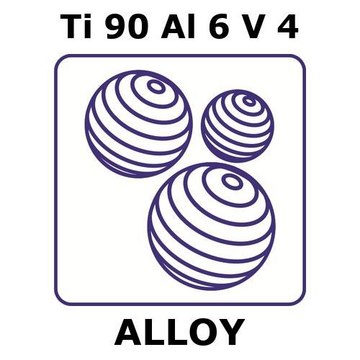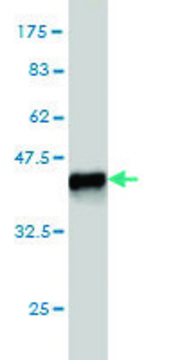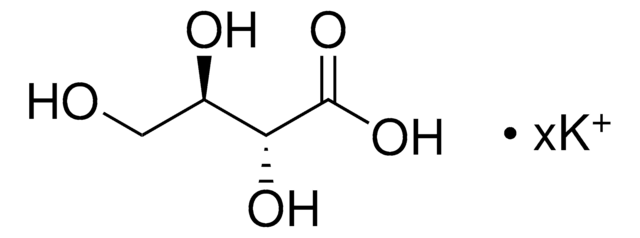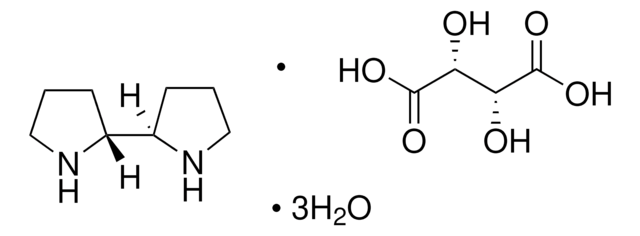E7625
D-(−)-Erythrose
≥75% (TLC), syrup
Synonym(s):
(2R,3R)-2,3,4-trihydroxybutanal
About This Item
Recommended Products
Quality Level
Assay
≥75% (TLC)
form
syrup
color
colorless to very dark yellow
storage temp.
2-8°C
SMILES string
[H]C(=O)[C@H](O)[C@H](O)CO
InChI
1S/C4H8O4/c5-1-3(7)4(8)2-6/h1,3-4,6-8H,2H2/t3-,4+/m0/s1
InChI key
YTBSYETUWUMLBZ-IUYQGCFVSA-N
Looking for similar products? Visit Product Comparison Guide
1 of 4
This Item | 75025 | 377619 | 688622 |
|---|---|---|---|
| assay ≥75% (TLC) | assay ≥97.0% (GC) | assay 99% | assay ≥98.5% (sum of enantiomers, GC), 99% |
| Quality Level 200 | Quality Level 100 | Quality Level - | Quality Level 100 |
| form syrup | form powder | form solid | form crystals |
| storage temp. 2-8°C | storage temp. 2-8°C | storage temp. - | storage temp. - |
| color colorless to very dark yellow | color white to off-white | color - | color - |
Application
Other Notes
Storage Class Code
10 - Combustible liquids
WGK
WGK 3
Flash Point(F)
Not applicable
Flash Point(C)
Not applicable
Personal Protective Equipment
Choose from one of the most recent versions:
Already Own This Product?
Find documentation for the products that you have recently purchased in the Document Library.
Our team of scientists has experience in all areas of research including Life Science, Material Science, Chemical Synthesis, Chromatography, Analytical and many others.
Contact Technical Service








